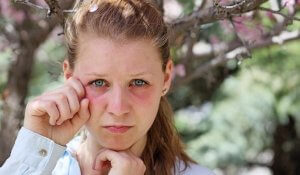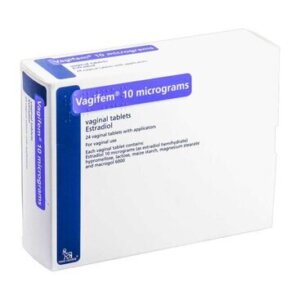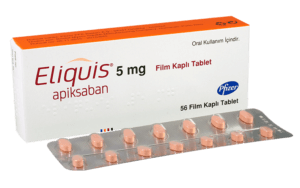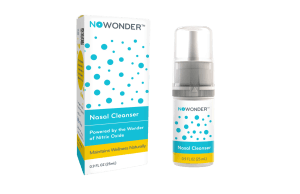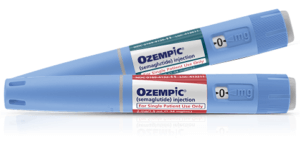 What you need to know about preventing seasonal allergic conjunctivitis:
What you need to know about preventing seasonal allergic conjunctivitis:
- Seasonal allergic conjunctivitis is an allergy-based eye condition triggered by things like pollen, dust mites, or pet dander.
- It causes symptoms such as red eye, itchiness, swollen eyelids, and watering.
- It is different from bacterial conjunctivitis or viral conjunctivitis, which are caused by infections.
- Common treatments include antihistamine drops, mast cell stabilizers, and artificial tears.
- People can reduce flare-ups by checking pollen counts, keeping windows closed, and using air filters indoors.
- Wearing glasses instead of contact lenses during allergy season may help reduce symptoms.
- For those with more severe allergies, doctors may use off-label options such as steroid drops or oral antihistamines.
- Treating symptoms early and avoiding known triggers can help reduce both the severity and frequency of outbreaks.
About seasonal allergic conjunctivitis
Seasonal allergic conjunctivitis can make everyday life frustrating when it shows up with itchy, watery, and red eyes. It’s one of the most common types of allergic conjunctivitis and usually happens when the pollen counts are high, like in spring and fall. Fortunately, there are a few simple strategies that can help prevent these bouts before they start:
- Avoiding outdoor exposure during peak pollen counts, especially in the morning
- Using artificial tears to rinse allergens from the eyes and reduce dryness
- Reducing contact with common allergens like dust mites and pet dander indoors
Seasonal allergic conjunctivitis is the most common form of eye allergy. It tends to show up in the spring or fall, when outdoor allergens like pollen are in the air. The condition isn’t dangerous, but it can be very uncomfortable. Many people confuse it with other types of conjunctivitis such as bacterial conjunctivitis or viral conjunctivitis, but unlike those, seasonal allergic conjunctivitis is not contagious. Instead, it’s the body’s reaction to harmless substances like pollen, pet dander, or dust mites.
While seasonal allergic conjunctivitis mostly affects children and adults who have allergies, it’s possible for anyone to develop it—especially those who already deal with hay fever, asthma, or eczema. People who wear contact lenses may find their symptoms worse, as lenses can trap allergens close to the surface of the eye.
 What is seasonal allergic conjunctivitis?
What is seasonal allergic conjunctivitis?
Seasonal allergic conjunctivitis is an eye condition that happens when the eyes react to something in the environment, most often pollen, grass, or dust mites. It causes inflammation of the thin layer covering the white of the eye and inside of the eyelids. This inflammation is the result of an allergic reaction that prompts the immune system to release histamines, which cause itching, swelling, and tearing.
It’s more likely to occur in certain seasons when allergens are high. For example, tree pollen in spring and weed pollen in fall are major triggers.
What are the signs and symptoms of seasonal allergic conjunctivitis?
Typical symptoms include:
- Itchy, watery, or burning eyes
- Red eye or bloodshot appearance
- Swollen eyelids, especially in the morning
- Grittiness or a dry feeling in the eye, sometimes linked to dry eye
- Sensitivity to light
Symptoms usually affect both eyes and come on quickly after exposure to an allergen. Unlike bacterial infections, this type does not produce yellow or green discharge.
About treating seasonal allergic conjunctivitis
What FDA-approved treatments for seasonal allergic conjunctivitis are available?
There are several FDA-approved treatments that help manage seasonal allergic conjunctivitis. These include:
- Antihistamine eye drops to reduce itching and redness
- Mast cell stabilizers that prevent the release of histamines
- Dual-action drops that combine both effects.
Some over-the-counter options, such as Crolom, work for mild symptoms, but others may require a prescription. Non-medicated artificial tears can also be useful to flush allergens from the eyes and provide moisture.
How do current treatments help seasonal conjunctivitis?
Treatments for seasonal allergic conjunctivitis work by calming the body’s allergic reaction. Antihistamines block histamine, a chemical that triggers allergy symptoms, while mast cell stabilizers prevent these chemicals from being released in the first place. Artificial tears don’t treat the allergy directly but help soothe irritated eyes and wash away allergens. These treatments are generally safe and effective when used as directed.
Are there off-label treatments for allergic conjunctivitis? 
Some oral antihistamines or steroid eye drops may be used off-label to manage severe or chronic symptoms, especially when regular options aren’t working. Doctors may also recommend oral medications when the eye symptoms are part of a wider allergy flare-up, such as hay fever or common cold-like symptoms. However, these options are typically used for short periods and under medical supervision.
What are the most common side effects of treatments for allergic conjunctivitis?
The most common side effects include:
- Temporary stinging or burning with eye drops
- Dryness or blurred vision right after use
- Headache or drowsiness with oral antihistamines
Serious side effects are rare but can occur if medications are overused. People wearing contact lenses should follow their eye doctor’s advice when using any medicated drops.
Frequently asked questions about seasonal allergic conjunctivitis
What triggers seasonal allergic conjunctivitis?
Airborne allergens like pollen, grass, mold spores, and dust mites usually trigger it. These particles cause an allergic reaction in people who are sensitive to them. The immune system mistakenly sees them as harmful and releases histamines, which lead to red, itchy, and watery eyes.
Can air conditioning cause conjunctivitis?
Air conditioning itself doesn’t cause conjunctivitis, but it can worsen symptoms. Dry indoor air can irritate the eyes, especially in people who already deal with dry eye or allergies. Also, if filters aren’t cleaned regularly, the unit can spread dust mites and mold, which are common triggers.
What makes you prone to conjunctivitis?
People who have allergies, asthma, eczema, or a weakened immune system are more likely to get conjunctivitis. Using contact lenses, rubbing the eyes, or exposure to allergens or irritants increases the risk. Kids are also more susceptible due to close contact at school.
How can I prevent conjunctivitis naturally?
Some natural strategies include:
- Keeping windows closed during high pollen counts
- Using a damp cloth to clean around the eyes
- Avoiding rubbing the eyes
- Rinsing eyes with artificial tears to wash out allergens
- Installing HEPA filters to reduce indoor allergens
Can allergic conjunctivitis be caused by stress?
Stress doesn’t directly cause allergic conjunctivitis, but it can make the body more sensitive to allergens. A stressed immune system may overreact to mild exposures, leading to more intense symptoms. Managing stress could help reduce flare-ups in some cases.
Can you use eye drops to prevent conjunctivitis?
Yes, using certain types of eye drops regularly during allergy season can help prevent symptoms. Artificial tears can flush out allergens, while prescription drops like antihistamines or mast cell stabilizers can prevent the allergic reaction before it starts.
What is the most effective treatment for conjunctivitis?
It depends on the cause:
- For bacterial conjunctivitis, antibiotics are most effective.
- For viral conjunctivitis, it usually clears on its own.
- For allergic conjunctivitis, antihistamine and mast cell stabilizer drops work well. Combinations of these two, such as Crolom, offer dual beneits in a single dose.
Is allergic conjunctivitis contagious?
No, it isn’t contagious. Unlike bacterial or viral conjunctivitis, allergic conjunctivitis is caused by allergens, not infections. It can’t be passed from person to person.
How long can pink eye live on sheets?
If the pink eye is caused by bacteria or viruses, the germs can live on surfaces like sheets for a few hours to a few days. Washing bedding in hot water can help prevent the spread of infections.
How do you prevent fall conjunctivitis?
Fall conjunctivitis is often caused by weed pollen and mold. Prevention tips include:
- Staying indoors on windy days
- Showering and changing clothes after being outside
- Using HEPA filters indoors
- Using allergy eye drops during the season
What is the newest treatment for allergic conjunctivitis?
Some newer treatments include dual-action eye drops that combine antihistamine and mast cell-stabilizing effects. These help reduce both immediate and long-term symptoms. Prescription options may offer longer-lasting relief than over-the-counter brands.
Can antihistamines get rid of conjunctivitis?
Antihistamines can be very effective for allergic conjunctivitis, especially in reducing redness, itching, and swelling. However, they won’t treat bacterial conjunctivitis or viral conjunctivitis, which need different approaches.
How can I protect myself from seasonal allergies?
Steps include:
- Watching pollen counts and limiting time outside on high-count days
- Using air filters at home
- Wearing sunglasses to block allergens
- Washing hands and face after being outdoors
- Using nasal sprays and eye drops during allergy season

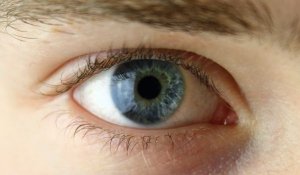 What you need to know about preventing seasonal allergic conjunctivitis:
What you need to know about preventing seasonal allergic conjunctivitis: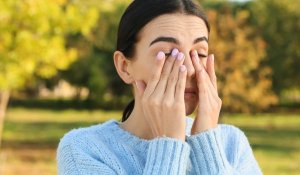 What is seasonal allergic conjunctivitis?
What is seasonal allergic conjunctivitis?